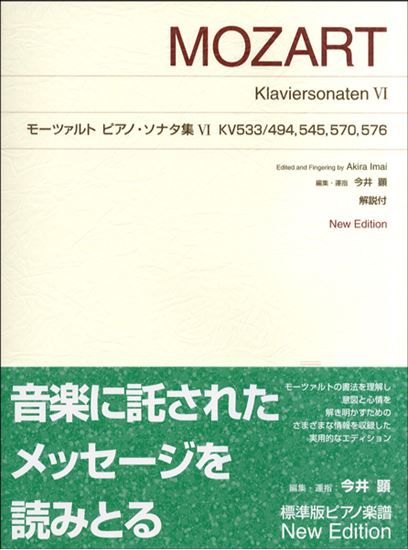Mozart, Wolfgang Amadeus : Sonate für Klavier Nr.17 Mov.3 Allegretto
Work Overview
Genre:sonata
Total Playing Time:4 min 00 sec
Copyright:Public Domain
Commentary (2)
Author : Okada, Akihiro
Last Updated: March 5, 2019
[Open]
Author : Okada, Akihiro
Third Movement: D major, 2/4 time, Rondo-Sonata Form
The rondo theme has a dance-like character and is presented with a simple accompaniment of repeated chords, but the accompanying voice quickly transforms into a virtuosic passage of sixteenth-note triplets. These sixteenth-note triplets then change into arpeggios, becoming a central structural element of the piece.
Modulating to the dominant key, the motive of the rondo theme develops in a responsorial manner (from m. 26), and after an intervening transitional passage of sixteenth-note triplets, a harmonic couplet theme characterized by stepwise descent is presented (from m. 51). Following a transition of ascending and descending arpeggios in sixteenth-note triplets, and the return of the opening theme (from m. 65), the transitional section is transformed, leading to F major.
In the middle section, the motive of the opening theme develops and unfolds polyphonically. It progresses from F major through G minor, A minor, B minor, and E minor, reaching D major and concluding with a half cadence.
The responsorial musical idea based on the opening motive, which introduced the dominant theme in the first half, now appears in the tonic key, and the couplet theme is recapitulated in the tonic key (from m. 142). After a transition of sixteenth-note triplet arpeggios, the rondo theme returns, bringing the movement to a close.
The third movement, with its developmental middle section and the recapitulation of the couplet theme in the tonic, can be described as a rondo form possessing a sonata-form-like tonal scheme and developmental motivic elaboration.
Sonata K. 576, with its outer movements focusing on polyphonic development and motivic elaboration, stands out as a unique work among Mozart's complete piano sonatas.
Author : Ooi, Kazurou
Last Updated: October 9, 2025
[Open]
Author : Ooi, Kazurou
PTNA & Partner Channel Videos(3items)
Sheet Music
Scores List (9)

(株)全音楽譜出版社

(株)全音楽譜出版社

(株)全音楽譜出版社

(株)音楽之友社

(株)全音楽譜出版社

(株)ヤマハミュージックエンタテインメントホールディングス








